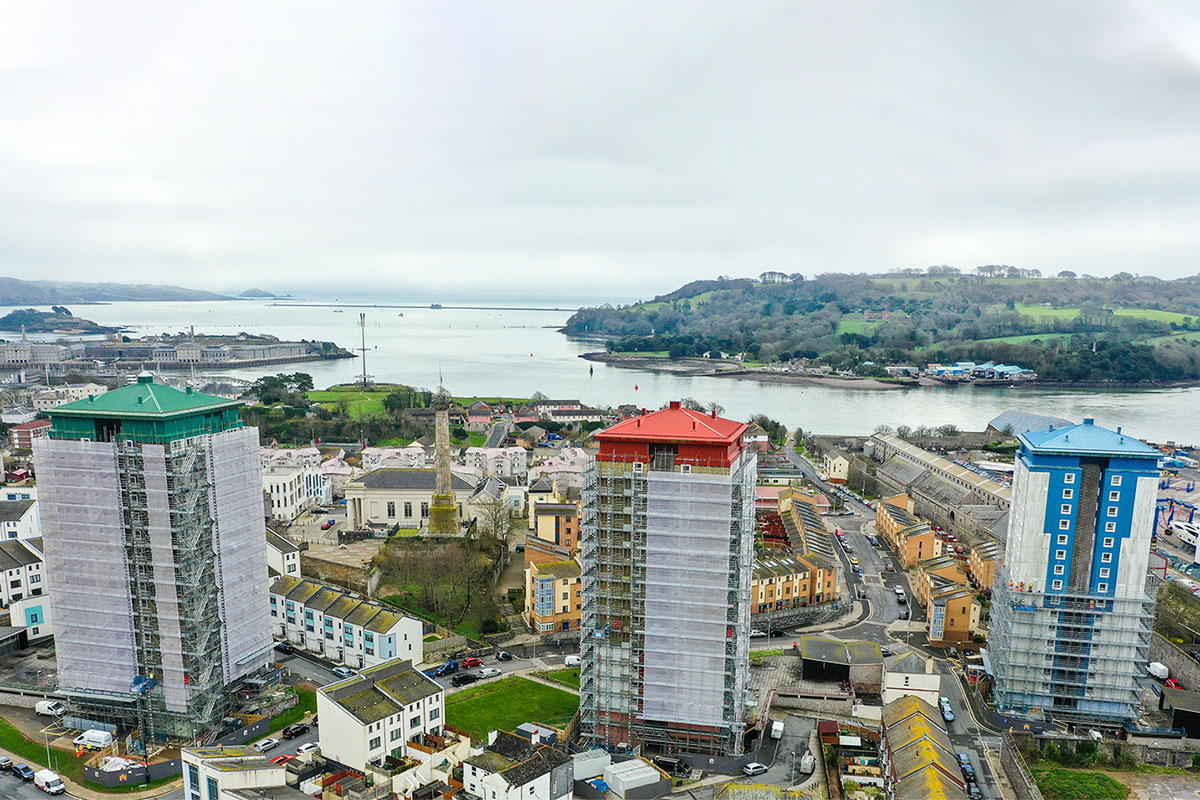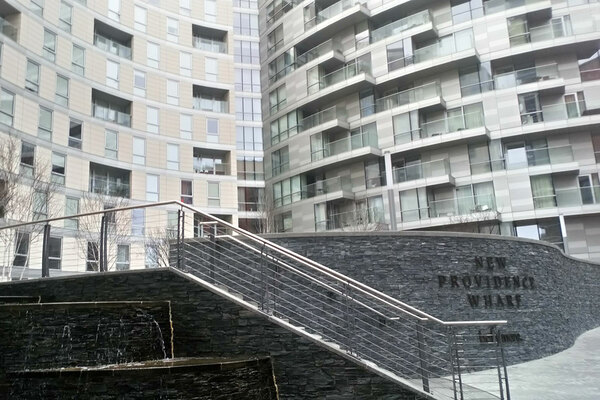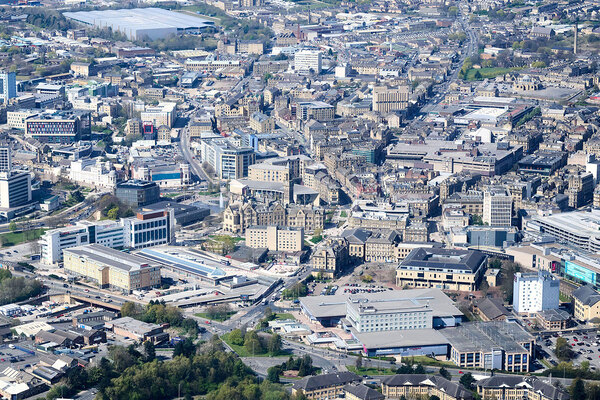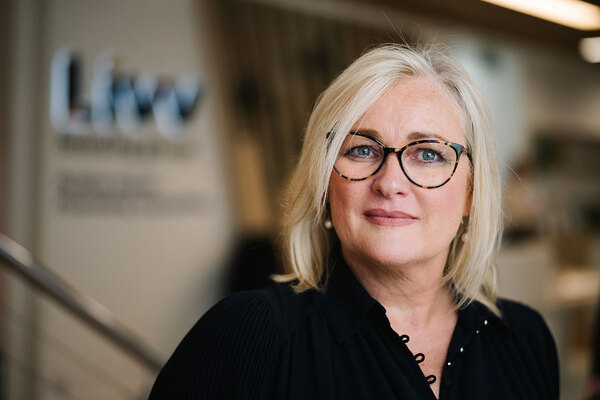How to make blocks with Grenfell-style cladding safe: the story of three towers in Plymouth
There are still more than 100 social housing blocks encased in ACM cladding. Peter Apps travels to Plymouth to find out how the removal work is going. Photography by Plymouth Community Homes and Peter Apps
Lynher, Tamar and Tavy Houses in Plymouth were covered in Grenfell Tower-style cladding to protect them from the weather
John Clark, chief executive of Plymouth Community Homes (PCH), is drowned out for the third time by the abrupt screech of a worker’s drill. He is sitting in a flat on the first floor of one of the tower blocks his company manages in the city.
The drilling is happening because the cladding that has been wrapped around this tower and its two neighbours for the past 20 years is aluminium composite material (ACM) – two thin aluminium sheets wrapped around polyethylene. And that, as we saw in devastating fashion at Grenfell Tower in London on 14 June 2017, will burn like petrol if ignited.
PCH, which manages 16,000 former Plymouth City Council homes in the city, has three towers with ACM cladding that require removal: Tamar, Tavy and Lynher Houses in the city’s Mount Wise area.
The buildings are identical 1960s towers, 19 storeys high, containing a total of 270 homes and 325 residents. Located close to the mouth of the River Tamar, they are a familiar sight to the many boats that drift across Plymouth Sound each day.
These are just three of the 158 social housing towers that have been identified post-Grenfell as having ACM cladding, only 46 (29%) of which have had the necessary remediation work completed. Two years on from the fire, this feels like slow progress.
So Inside Housing has travelled to Devon to find out what stripping cladding from a high-rise actually involves.
“Residents would have liked it if we’d have done this in six months. But we knew from the start that the priority has to be doing it right,” explains Mr Clark.
Plymouth City Council clad the Mount Wise towers in 1999, primarily to protect them against the weather – 40 years of roaring south-westerly gales and horizontal rain had taken their toll on the concrete, which was beginning to become porous. The buildings’ insulation also needed improving and there was a desire to give the ageing towers a colourful facelift.
The system the council picked was common: Alucomat ACM cladding panels and Rockwool mineral wool insulation. This is less combustible than the cladding at Grenfell, which had ACM and plastic foam insulation. It’s also in line with the building guidance in force at the time. But thanks to the petrol-like polyethylene, it’s still very dangerous.
PCH, of course, did not know this before Grenfell happened. But six days after the fire, it posted a sample panel to the Building Research Establishment (BRE) for testing. It also checked fire doors and smoke alarms in the towers, and drafted in a local security company to provide waking watch services while it waited for the results.
It conducted its own test, too – it took a piece of the cladding to a local fire station, where a firefighter applied a blowtorch to it. It caught fire, but self-extinguished, giving the association some comfort.
But when BRE’s test results came back, they were clear – the cladding had to be removed. And that is where things got tricky.
“The fabric of the building [would have] let water in. There are gaps you could put your hand through,” explains Sue Shaw, director of homes, neighbourhoods and regeneration at PCH. “So we were in a position where we couldn’t just take the cladding straight off.”
The answer was both simple in design and complex in execution. Scaffolding would have to be erected and covered with weatherproof sheeting. Then the cladding could come off inside it and be replaced with a completely non-combustible system, rendered flush to the wall.
As Ms Shaw explains, this is not a straightforward process: “You can’t have a situation where people can’t see out – you can’t put people in a bag. Most jobs like this don’t get done while [the building is] occupied.”
PCH therefore needed something transparent. And fireproof. And robust enough to withstand Plymouth’s rainstorms.
“You wouldn’t believe how difficult it was to find something. Our consultant [Bailey Partnership] came up with essentially the only material there is,” says Ms Shaw.
This material is triple-stitched debris netting. Before attaching it to the towers, they tested it with a hosepipe to ensure it was water-resistant.
It has worked. Inside, the homes look a little dim – as if it is constantly likely to rain outside – but daylight makes it in and the view is unobstructed. PCH has also provided special ‘daylight’ light bulbs to further help.
“There was never a question that we wouldn’t be able to afford to do it” – John Clark, chief executive, Plymouth Community Homes
Housing officers told Inside Housing that one autistic tenant is relieved he can still count the boats in the harbour every morning. Another tenant is still being visited by the friendly seagull he feeds every day, which he has affectionately named ‘Steven Seagull’.
On top of this, the scaffolding had to be made entirely from steel – for fire safety reasons, not a single timber board was allowed. Procuring all this steel was a lengthy process. For safety reasons, contractor Mi-space had to work from the top of the block down, so it was necessary to have the scaffold entirely in place before it could begin. Workers also had to use completely non-sparking tools. Putting all this in place took time.
“The complexity is 95% of [the delay] in getting off the cladding,” explains Mr Clark. “The bit that’s difficult to get across to the media and the government is that doesn’t mean nothing is happening.”
PCH accelerated a £600,000 programme of sprinkler work planned before Grenfell. That is now complete, with the sprinklers boxed in and visible only as small white discs in residents’ homes. You would miss them entirely if they weren’t pointed out.
Two of the towers have now had the cladding removed but will still need a new insulation system fitted next year
It also filled in decorative gaps in the brickwork in the stairwell that could have provided a route to the cladding panels for fire. The 21 leaseholders in the block were offered cut-price 60-minute fire doors (double the legal minimum) that had previously been installed in tenants’ homes and had been made in PCH’s own factory. They were also protected from the cost of other remedial work.
This is because all of this does cost money. Removing the cladding from the three blocks comes in at £11.8m.
The government stepped in last June with grant to cover the work, but PCH had previously allocated funds in its business plan to do it. It had intended to cancel other work to make space: a project to fit insulation on another block in the city was, for example, halted on the day it was due to begin.
“We don’t have that £11.8m to spend twice, so it would have meant delays to other blocks around the city. There was never a question that we wouldn’t be able to afford to do it,” says Mr Clark.
The remaining works come in at £1.2m, which it has also found space for in its business plan; the largest single cost – the sprinklers – was already planned.
There is also the question of loan security. Mr Clark explains that the clad towers were swapped out of loan portfolios to avoid the issue. But it is the kind of thing that could trigger a loan covenant breach at an association that had more affected towers and fewer alternative properties available to act as security. “Some insurers are taking [the towers] down to zero value – so it would have an impact on your business,” says Mr Clark.
Another tough challenge has been evacuation. The buildings have switched from ‘stay put’ to ‘full evacuation’ in the event of fire. Getting 325 people out of the three towers safely is a challenge: it requires knowledge of those with mobility issues, for example.
PCH has placed details of vulnerable residents in a box at the bottom of each tower block. Residents have been told to leave flats and wait on landings if there is a fire, while fire wardens or firefighters climb the stairs to help them evacuate.
This has been tested for real: a few weeks before Inside Housing’s visit, a chip pan caught alight, triggering a block-wide evacuation; in another incident, someone set off an alarm as an act of anti-social behaviour – and was later prosecuted.
PCH staff estimate it took around 30 minutes to clear the blocks in these instances, although some residents did refuse to leave. The CCTV of the operation has been sent to the government’s building safety experts to study.
Residents Leanne and John Fox are happy with PCH’s work
Throughout all this, the association has given considerable thought to communication with residents. “It’s about keeping people on board, keeping that trust so people know something is happening, and not just hiding because it’s getting a bit difficult,” explains Mr Clark.
There have been residents meetings, new plasma screen TVs installed in lobbies to provide updates and flat visits. Liaison officers working for Mi-space have identified resident shift workers, so the company can keep works away from their flats while they sleep during the day.
Inside Housing drops by the community centre to see how this has been going down with residents. There we meet John and Leanne Fox. John – who speaks with a gentle West Country accent – explains their experience, as he shows off several woollen toys he has crocheted.
“We’re quite happy for it to be done,” he says. “There are some people who are moaning about it because they don’t know what’s going on, but they should have been coming to the meetings.”
Leanne says her claustrophobia made her nervous about the loss of daylight, but she is happy with how PCH dealt with it.
“It’s about keeping people on board and not just hiding because it’s getting a bit difficult” - John Clark, chief executive, Plymouth Community Homes
The couple are among those who need help to be evacuated from their flat. “When the alarms went off at 10 at night, I did feel dizzy and panicky. But I wasn’t too scared, because I knew the sprinklers would knock it out if it got too bad,” Leanne says.
Back in the office inside one of the towers, while workers use their sparkless drills outside the window, Mr Clark explains that when the cladding was discovered, PCH offered all the residents the chance to move out of the towers if they wanted to.
“It was only a handful of people who decided to,” he says. “The thing that really surprised me is that when properties are advertised here, people still move in, even though they know about the issues.”
The project to remove the towers’ cladding has been complex, but the fundamentals are simple: prompt action, meticulous planning and open communication with those affected.
Two of the blocks are now completely stripped of the dangerous material, although fitting the new insulation system will continue into next year.
But across the country, the work to truly make high-rises safe – both social and privately owned – will roll on for much longer than that.
As it stands, only 5% of affected private blocks have been remediated. And we have not even started identifying dangerous non-ACM systems.
As the nation grapples with these problems, there are lessons to be learned from Plymouth.
End Our Cladding Scandal: campaign aims
- Government provides a fund to cover the cost of cladding removal and remedial works on private blocks
- A firm timescale is set out of no more than two years for the work to be carried out
- Residents are reimbursed for the interim fire safety costs incurred, and funding is to be provided for necessary internal fire safety measures identified by a competent fire risk assessor
- Terrie Alafat, chief executive of the Chartered Institute of Housing, added: “It is shocking that out of the 176 private blocks with dangerous cladding that have been identified since Grenfell, only 10 have had the necessary safety work completed. While the government has pledged to fund the replacement of dangerous cladding in the social housing sector, there is no such promise for residents in private flats, which is why we are supporting Inside Housing’s new campaign to change this now.”
Kate Henderson, chief executive of the National Housing Federation said: "It should go without saying that everyone must be safe in their own home.
"But dangerous cladding has been used on tower blocks of all tenures across the country because government fire safety regulations were not fit for purpose. The government must now take financial responsibility for ensuring that each and every home affected, no matter who owns it, is made safe and fast.”
- Jane Duncan, chair of the Expert Advisory Group on Fire Safety at the Royal Institute of British Architects, said: “It is appalling that nearly two years on from the Grenfell Tower tragedy there are still buildings with cladding systems that have been identified as a risk to public safety. This must be rectified with immediate effect and individuals should not face financial hardship because of a past failure in regulation.”
Suzanne Richards, executive member for housing and regeneration at Manchester City Council, said: “I have heard first-hand the stories from residents about how living in a block that is not deemed fire safe can impact on their emotional health and well-being.
“On top of this they have the additional worry of the threat of bills, of up to £80,000 in some cases, landing on their doormat.
“This is unacceptable and government must now step in and fund post-Grenfell remediation works.”
Paula Higgins, chief executive of the HomeOwners Alliance, said: “Cladding has not been removed because freeholders and warranty providers do not want to take responsibility. These homeowners are stuck in a void with no end in sight.
“Government needs to bang heads together and find a solution quickly because these people have been sold a duff product. If no one will take responsibility then government must step in and take action to protect people urgently.”
Andy Dark, assistant general secretary of the Fire Brigades Union, said: “It’s a scandal that residents who are living in tower blocks covered in flammable cladding and where basic fire safety is substandard have no certainty whatsoever that their homes will be made safe.
“Whether publicly or privately owned, the remedial work needs to be completed quickly and the government must take responsibility for getting the job done.”
Martin Boyd, chair of the Leasehold Knowledge Partnership, said: “It has taken far too long for government to take action to remove dangerous cladding from thousands of people’s homes.
“This has always been either the fault of regulations or the failing of the developer but nobody seems willing or able to challenge either group.”
Jim Fitzpatrick, Labour MP for Poplar and Limehouse and co-chair of the All-Party Parliamentary Group on Leasehold and Commonhold Reform, said: “No one should be left in the position of having worked and saved for years to become a property owner, to then learn – through no fault of their own – their home is no longer safe.
“This campaign rightly highlights the consequences of inaction and I urge the government to take responsibility as a matter of urgency.”
John Biggs, mayor of Tower Hamlets said: “I fully support the campaign from Inside Housing calling on the government to fully fund all works needed to remove dangerous cladding from all housing blocks.
“Ministers have rightly said their top priority must be to ensure that people are safe in their own homes, and it is entirely unfair to expect residents to find tens of thousands of pounds to fund this without any help whatsoever.”
Rushanara Ali, Labour MP for Bethnal Green and Bow, said: “It is outrageous that two years after the Grenfell disaster there are still 40,000 leaseholders across the UK who are stuck living in unsafe blocks with dangerous cladding.
“The government must move fast to replace flammable cladding on every building, no matter who owns it, and must do it now.”
- David Walker, bishop of Manchester, said: "In Manchester and beyond, many months after the Grenfell tragedy, too many people are still living in apartments that do not adequately protect them against fire. Many are now faced with five figure bills to make good the deficiencies, and find their homes have become practicably unmortgageable. I applaud the efforts of Manchester Cladiators to bring together residents and others who share their concerns. The challenge is simple, to get developers, freehold owners and government to step up to the plate and accept responsibility for urgently rectifying this scandalous state of affairs."
















